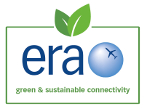 What is it?
What is it?
Carbon offsetting allows a company to compensate for its emissions by financing a reduction in emissions elsewhere. While carbon offsetting does not require companies to reduce their emissions “in-house”, it provides an environmentally effective option for sectors where the potential for further emissions reductions is limited. There are many ways to achieve CO2 reductions that can be used as offsets, many of which bring other social, environmental or economic benefits relevant to sustainable development. Traditional offsets include financing alternative energy for communities, protecting or extending forestry and other natural carbon sinks.
Offsetting and carbon markets have been a fundamental component of emissions reduction policies and continue to be an effective mechanism to underpin action against climate change.
Offsetting is also more effective than a tax, as a carbon tax merely requires companies to pay for their emissions, without any guarantees that the payment will lead to any emissions reductions. In many cases, a tax on aviation will not reduce emissions and will simply be used to generate revenue for governments. Offsetting places a cost on the industry, but the revenue goes directly to projects that reduce CO2 emissions.
Sources of offsets and sustainability
The ICAO process also includes a robust mechanism to ensure the offsets used in CORSIA bring about real reductions in CO2 emissions. In the past, a number of questionable offset schemes have not delivered on the emissions reductions they promised. The emissions units that can be used by airlines under CORSIA will be decided by a group of government-appointed technical experts based on several criteria that have already been approved by the ICAO Council.
Source: ATAG
